Some common sense about ultrasonic cleaning
Browse Volume:1538 Classify:Support
What is the frequency of commonly used ultrasound? What is the difference in application?
25KHZ 28KHZ 33KHZ 40KHZ 60KHZ
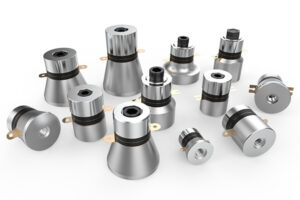
Many kinds of Granbo Transducers
Relatively speaking, the higher the frequency, the greater the density acting on the object to be cleaned, the higher the cleanliness, but the weaker the strength. It is mostly used to clean optical glass and other products with high cleanliness; on the contrary, it is used for cleaning of common workpieces with low frequency, such as dewaxing and degreasing cleaning of hardware.
How long does the ultrasonic vibrator last?
Under normal use, the service life of the imported vibrator is about 8 years. By normal use we mean:
1. Dry shock is strictly prohibited. That is, there is no liquid to start the ultrasonic work;
2. It is strictly forbidden to step on or hit the bonding surface of the ultrasonic vibrator to prevent the vibrator from falling off;
3. The working environment of the ultrasonic generator should be well ventilated and regularly cleaned and maintained;
4. Do not replace or adjust the vital parts in the ultrasonic generator at will
What temperature is the best for ultrasonic cleaning?
For aqueous solutions, the most suitable washing temperature is 40 to 50 degrees. Too low temperature will reduce the chemical activity of the solution. If the temperature is too high, the elasticity of the gas in the bubble is increased.
How to choose an ultrasonic cleaner?
According to the experience of ultrasonic cleaning, different workpieces, different production processes, different materials, and cleanliness requirements of different workpieces, different geometric shapes, and different cleaning agent selections are not required for cleaning.
The cleaning process has a very large impact, so the structure of the cleaning equipment is also different. Some even need to be determined experimentally. Choosing a reasonable cleaning process route can get good results and reduce equipment manufacturing costs.

Technical characteristics of ultrasonic
Application field
Among all the current cleaning methods, ultrasonic cleaning is the most efficient and effective one. The reason why ultrasonic cleaning can achieve such an effect is closely related to its unique working principle and cleaning method. We know that in production and life, there are many things that need to be kept clean, and there are many types and links that need to be cleaned. Common manual cleaning methods are undoubtedly unable to meet the requirements. Even steam cleaning and high-pressure water jet cleaning cannot meet the requirements for cleanliness. Higher demand, so this is the reason why ultrasonic cleaning is increasingly widely used in all walks of life.
1. Machinery industry:
Removal of anti-rust grease; cleaning of measuring and cutting tools; degreasing and rust removal of mechanical parts; cleaning of engine, carburetor and auto parts, dredging and cleaning of filters and filters, etc.
Wait.
2. Surface treatment industry:
Degreasing and rust removal before electroplating; cleaning before ion plating; phosphating treatment; removal of carbon deposits, oxide skin, polishing paste, surface activation treatment of metal workpieces, etc.
3. Medical industry:
Cleaning, disinfection, sterilization of medical equipment, cleaning of laboratory utensils, etc.
4. Instrumentation industry:
High cleanliness cleaning of precision parts, cleaning before assembly, etc.
5. Electromechanical and electronic industry:
Removal of rosin and welding spots on printed circuit boards; cleaning of high-voltage contacts, terminals and other mechanical and electronic parts, etc.
6. Optical industry:
Degreasing, sweating, ash cleaning, etc. of optical devices
7. Semiconductor industry:
High cleanliness cleaning of semiconductor wafers.
8. Science and education culture:
Cleaning and descaling of laboratory utensils such as chemical biology.
9. Watch jewelry:
Remove sludge, dust, oxide layer, polishing paste, etc.
10. Petrochemical industry:
Cleaning and dredging of metal filters; cleaning of chemical containers and exchangers, etc.
11. Textile printing and dyeing industry:
Cleaning textile spindles, spinnerets, etc.
12. Others:
Cleaning: remove contaminants and dredge small holes, such as cleaning seals, antique restoration, and dredging of car sprinklers.
Stirring: accelerate dissolution, improve uniformity, accelerate physical and chemical reactions, prevent over-corrosion, and accelerate oil-water emulsification, such as solvent dye mixing, ultrasonic phosphating, etc.
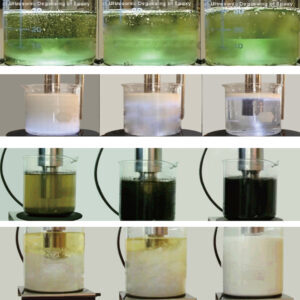
Ultrasonic emulsification
Coagulation: Accelerates sedimentation, separation, such as seed flotation, beverage slag removal, etc.
Sterilization: kill bacteria and organic pollutants, such as sewage treatment, degassing, etc.
Pulverization: reduce solute particle size, such as cell pulverization, chemical detection, etc.
Sealing: Eliminate interstitial gas and improve overall density, such as workpiece dipping, etc.
 GranboSonic
GranboSonic





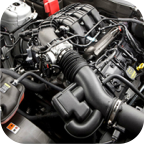
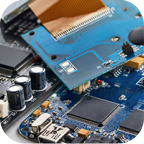


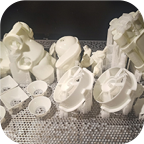

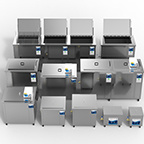




Hello!